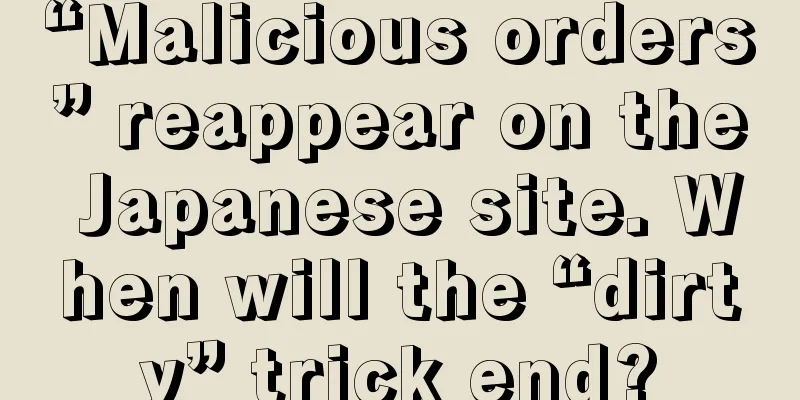|
Development of Xiaobaibai
I saw a decorative ornament (the fourth product in Figure 1), which was made of a wooden frame with a poem printed on it. It sold more than 300 pieces per month.
Q: How did it sell so well? Was it because of the poem or the wood frame?
If you search for this poem on the site, you will see similar ornaments + the same poem.
But except for this one, the others did not have any sales.
Q: Can’t I judge this poem through this search result?
Could this be related to the traffic entrance?
For example, when a customer searches for the word "decorative ornaments", various decorative ornaments will appear, including this 300-month-selling product. Customers will buy it if they like it, so there is dynamic sales.
Other products didn’t sell well because they didn’t get much exposure, so poetry isn’t the main factor affecting product sales?
----------------
If you come across a non-standard product that sells well, you want to know why it sells well. It is difficult to judge if you directly compare the sales of different similar links.
Because it may have multiple attributes, text, pattern, style, material and so on.
I think we need to separate different attributes and verify whether the attribute is good, what characteristics it has, and which attribute is most likely to be the reason for the link to be sold (not discussing the operation side, only the product side).
Then, as I said at the beginning, I want to verify whether the poem is the main attribute that sells. I search directly with the poem, and the links that come out have little sales. Does this mean that this attribute is not good? Or is it because of the traffic entrance: that is, customers will not search directly with the keywords of the poem, but with big words.
But thinking about it these past two days, this poem doesn't have much traffic, maybe this thing is not a particularly good element. If it were, there should be customers searching using related words.
Link analysis: 1) The products are out of stock on 5.7, 5.30 and 6.6
2) The link got 3 stars between the 2nd and 4th comments, and the rating went from 5 to 3.8, and then finally returned to 4.3 after 11 ratings;
3) The price was 19.99 at the beginning and ranked over 700,000. After the price was reduced to 15.99, the ranking rose to 60,000.
4) The first two traffic words in the link are: motivational wall decor, inspirational wall decor. Word 1 had few searches before, but it increased from 10,000 to 50,000 in Q2 this year (I don’t know if it will continue to grow);
There were few searches for word 2 in the first half of last year, but it grew to 60,000 in Q3, then quickly dropped and grew again around Q3 of this year (perhaps there is seasonality? But I can’t associate it with any seasonality based on the meaning of the words). If both words drop after this year, the sales of this link should drop significantly.
5) Regarding advertising, this ASIN had ads from 11.12 to 11.18, but there was only one search term. From 11.19 to 11.25, there was no search term. I’m not sure whether the ads were turned off or there was no search term (no exposure).
"Wonderful Reply"
Leeaandrew - Welcome to communicate Agree with: Ama Swollen Tree Planter, Sunset Under the Boat, JumpOverBlack, Hand-Torn Burnt Maggie, hamsterzz more » This question is quite interesting. The fact that the original poster can ask such a question shows that he has begun to understand the essence of development. However, the direction of this question is not very clear. After reading the original poster's description several times, I think the question should be modified to:
How to identify whether the selling point of a type of product is a real demand or a false demand? As a developer, how to develop a keen eye for discovering and identifying popular elements of a product?
I think if we answer the question in this way, our understanding will be clearer.
Let's try to answer this question:
Regarding the exploration and identification of product selling points, to sum up in one sentence, we can examine it from two aspects: the market demand side and the seller supply side. The conclusions of these two dimensions may be the same, or they may lead to completely opposite conclusions.
1. Let’s first talk about the dimension of seller supply side
Before answering the seller supply-side dimension, Lee would like to ask everyone a question:
If a product under a certain keyword is naturally ranked first/has an AC label/has the highest sales volume, does it necessarily mean that this product meets market demand?
The answer is no. This question is easy to answer, but there is an interesting phenomenon behind it:
The ranking display on the search results page or the AC label, etc., are the result of the combined effect of product sales and market selection. Especially in a shorter time slice, product sales play a decisive role and may even overwhelm the real buyer demand.
The argument for this point is also very simple. The popular methods in the past few years, such as brushing orders to get on the homepage, clicking on keywords to get on the homepage, pig-killing schemes, etc., all rely on brute force methods to point-to-point increase the product's keyword click-through rate/conversion rate/closed orders, thereby making the keyword position higher or obtaining the AC label.
The disadvantages are also obvious. They can be maintained in a short period of time, but as the timeline is extended, market selection will eliminate such behaviors that violate the real needs of buyers.
So in 2023, when black technology is out and white hat operations are prevalent, do the product sales and rankings we see necessarily represent the real market demand?
The answer is still no. Whether a product sells well or not is never decided by consumers alone . The operation level, price setting, inventory status, and financial strength of each seller will determine the direction of a product. In the case of no particularly big differences in products, a low enough price and sufficient funds are more convincing than whether the selling point is attractive or not.
We need to make one thing clear. Amazon is ultimately a shopping platform, not a hobby social media. For traditional shopping apps, every opening corresponds to a subconscious shopping behavior, and in most cases this behavior is spontaneously led by users rather than relying on sharing and clicking links (having written this, Lee has to sigh, how did Temu and PDD come up with the idea of Kan Yidao back then?).
Therefore, active search was and still is the core behavior of Amazon consumers, and search traffic dominates Amazon traffic. In the search model, the slot means exposure, and exposure means sales, but high sales do not mean good selling points. It is because consumers have no choice or no time to browse the selling points of products ranked behind (think of the notorious bidding model of Baidu ads).
So history always repeats itself, and the results are always similar. What buyers can buy depends, in a sense, on what the top sellers offer. The only difference is that these sellers have changed from black technology sellers to RMB sellers. The products of the top sellers are far from representing the product demand of the entire market.
Summary: Using sales volume as a proxy for demand is a rookie behavior. Lee believes that this is a reversal of cause and effect, and developers need to abandon the practice of simply studying how a product sells from the perspective of sales volume and then analyzing whether the selling point of this product can be used as a reference.
2. Buyer demand side <br >The previous article just discussed the disadvantages of the sales volume dimension. So correspondingly, is it absolutely foolproof to customize and develop products according to buyer needs?
To answer this question, let’s break it down:
I. What are buyer needs?
——As stated above, on the Amazon platform, search traffic occupies a leading position, and search traffic corresponds to the shopping needs of buyers
II. How to judge buyer needs?
——The traffic volume of different keywords indicates the strong demand
III. Don’t be held hostage by buyer demands - according to this logic, sellers should develop products based on the level of demand. The products that best meet the needs of consumers must be the best sellers, right?
Young man, congratulations, if you have read this and asked this question, it proves that you have entered the threshold of development and can be called "entering the hall". However, Beihai, Lee can only tell you to think more.
If we start from the demand dimension, there are similar problems. Lee will give a few examples:
1. Large demand means more sellers are developing in this direction, which also means more intense competition. You need to evaluate how much money your competitors spend to meet this demand.
For a developer, if a good function worth 1 yuan needs 2 yuan to be realized, it is not a good demand. In terms of the two contradictions of function realization and cost reduction, it is unreasonable to lean to either side, which will affect the promotion of subsequent operations. Lee personally thinks that development can also be divided into several levels here:
Product functions can be improved by one point and reduced by one point - this is what every mature developer pursues and is awarded the title of "outstanding"
If the product can reserve redundancy or come up with alternative solutions for annual cost reduction in advance, the boss will pour you tea and you will be called "divine skill"
Lee, as a former small developer, although unable to reach that point, yearns to do so in his heart.
2. Some demands can coexist peacefully, but more often they fight with each other. If A is achieved, B cannot be achieved, or due to cost constraints, only one of the two can be chosen. How do you make a choice at this time?
3. There is a particularly cool demand that all the sellers haven’t met. I’m the first one to discover it, and I’ve also achieved it with a controllable cost. The first order costs 1,000. Do you want to take a gamble?
Problems like these are all caused purely from the demand side. A thousand consumers have a thousand demands. If the development is merely obsessed with meeting those demands without a clear outline, either the product will always remain on paper, or the product that is barely produced will be ignored and just be a personal indulgence.
At this point, Lee wants to get to the point. It is not advisable to simply start from any one dimension. Qualified development is walking a tightrope and finding a balance between demand and supply.
I hope the above can answer some of your confusions. Thank you.
| 









